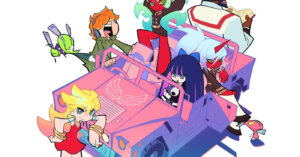Author’s Note: This article contains minor spoilers of Idolm@ster and its successor Cinderella Girls and heavily relies on knowledge of both shows.
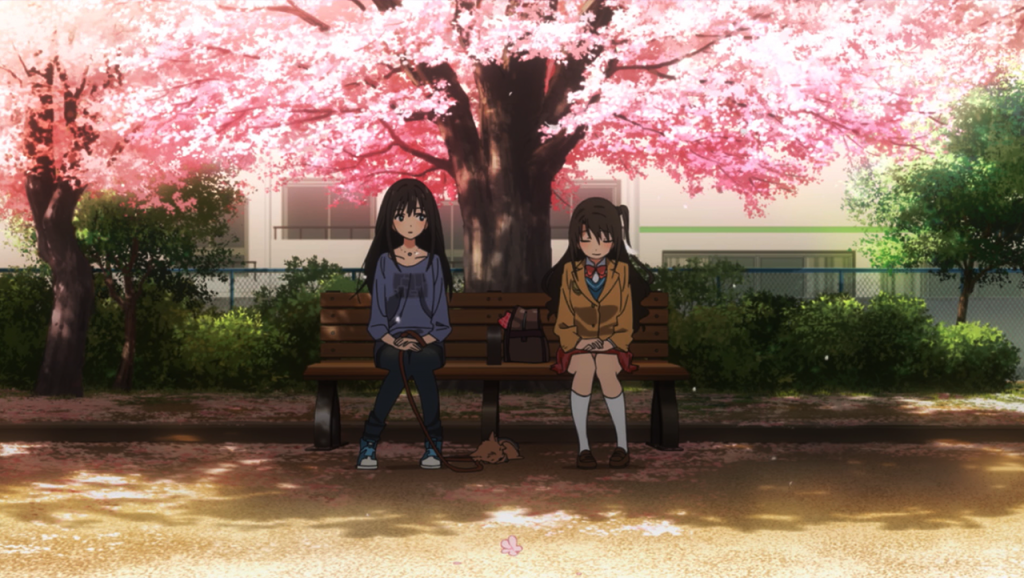
Spin-offs and sequels have always tricky to make. Typically, a good story finishes without any need to continue and we get a complete arc; unless of course the full scope of the story is too massive to fit into one entry (for example: Harry Potter).
This is where sequels and spin-offs come into play. They’re produced to either expand on the universe originally created or to chronicle a new story in a different time or place.
People like sequels and spin-offs mainly because it’s hard to let go. Sometimes, we as the audience want to stay with certain characters a little longer or witness the story of the supporting characters instead (and maybe end with where they encounter the main characters from the original source).
One of the biggest problems with spin-offs, though, is that they usually tend to do everything the exact same way its predecessor did. Literally repeating every kind of development already done in the same franchise feels tedious. However Cinderella Girls, as a spin-off product of Idolm@ster, makes many interesting divergences. Here are three big ones–
The Producer
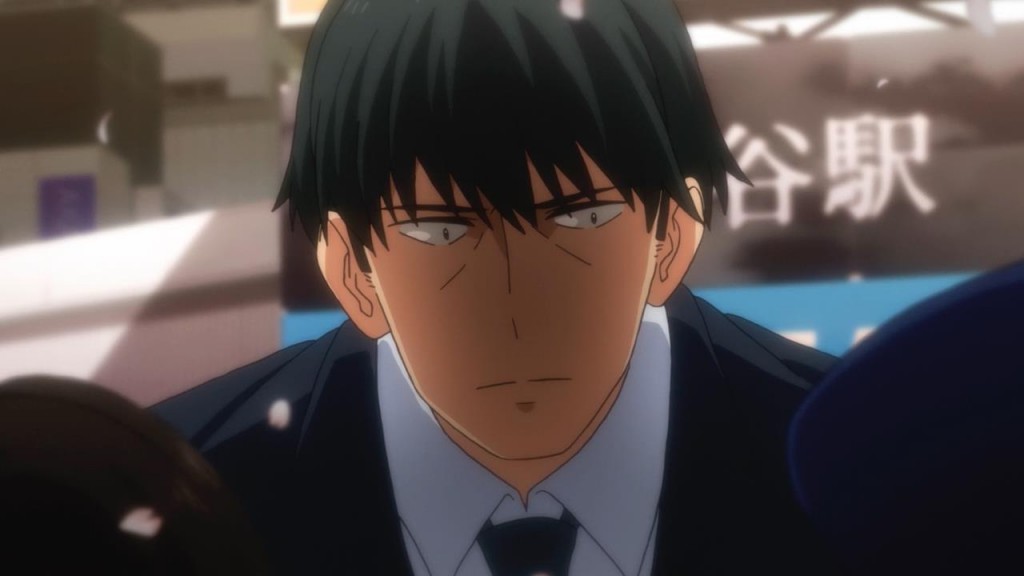
In the original Idolm@ster anime, the Producer was revered as a voice of reason for each of the girls. He was always there to say the right thing at the right time, always there to know how to help each of the girls, always there to make them feel better; the only one he ever really had any difficulty getting along with for a while was Miki Hoshii, and that situation ended up with her loving the Producer. In Cinderella Girls, the Producer is the polar opposite. He’s awkward, scary-looking, and isn’t the best when it comes to comforting the girls with his way of words. The show even mentioned how he failed to make several girls idols in the past.
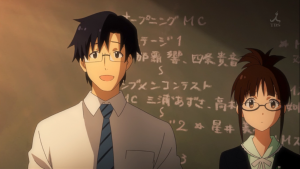
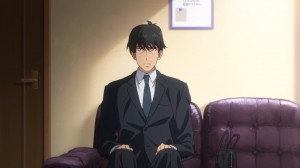
Of course, like the Producer in the original show, he is ultimately the character that brings everyone together in the end. But he has to go through many more obstacles to do so. Sometimes he can’t find a way to properly communicate with one of the idols, or downright just pisses them off with the way he says things. He’s passionate and cares for these girls, but is very stiff when coming to show it or acting on it. Actually, at several points of the show, he even gets called out by the cops for looking suspicious when around the girls.
There wasn’t really anything wrong with the Producer in the original series, but the Producer in Cinderella Girls feels relatable as a character, having to deal with multiple difficulties. Because of that, each of his actions feels more real.
Duality Between Established and New Idols
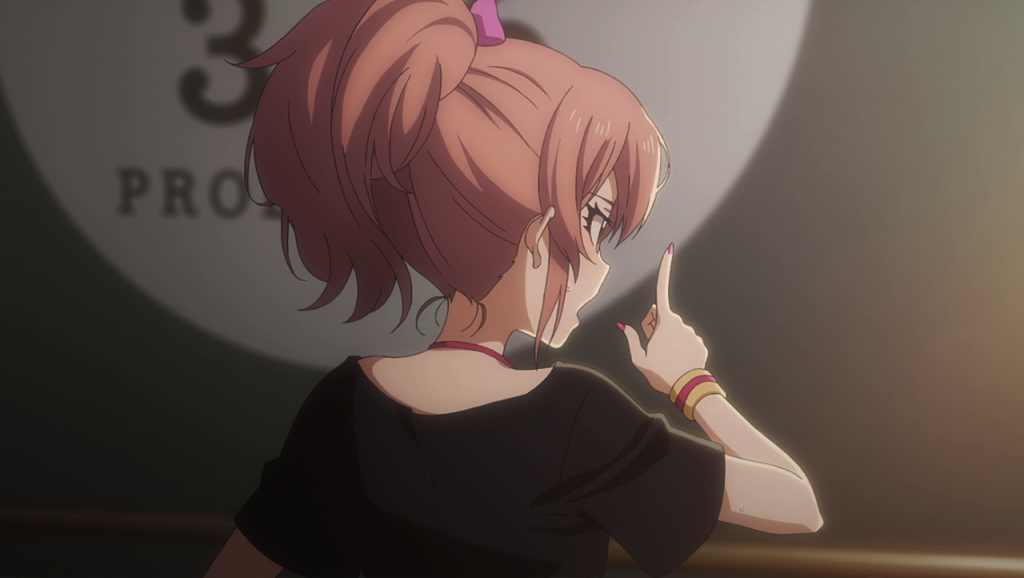
Now this may only be fully appreciated when one already has some prior knowledge of the franchise, knowing all the popular idol characters in the game, because there are a ton of easter eggs in Cinderella Girls. They all, with at least one or two references in each episode, refer to either other characters in the games or the ones from the original Idolm@ster.
Doing this, Cinderella Girls makes the Idolm@ster world feel much bigger than we initially witnessed the first time. And the show does this also by having many popular idols from the game play as supporting characters whom are already established and famous.
The show uses this duality of popular idols and idols who are aspiring to be popular to display how connections definitely get you farther in this kind of industry. In the beginning of the show, the popular Mika Jougasaki lets the unit New Generations perform at a gig almost immediately after they’re formed. This early appearance gains them an early debut. By following relatively less popular idols, whom are being compared to already established ones, there’s a genuine feeling of having to climb up a ladder towards success.
The original Idolm@ster Movie sort of did this as well, with the 765 Pro and Million Live crossover. But due to the film’s recycling of themes from the original show’s final arc, the movie felt frivolous, and the unnecessary long run-time didn’t help either. Also the Million Live girls were never really given much time to shine individually, besides Kana Yabuki.
Money, Money, Money
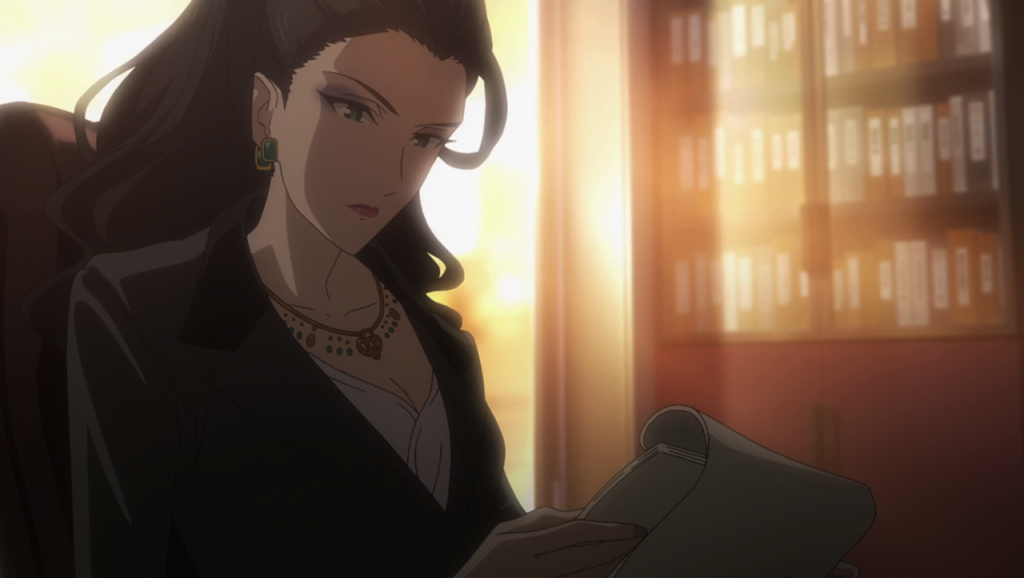
The most unexpected choice made in Cinderella Girls was a reminder that the Idol industry, after all, is a commercial business. In the end, the most important thing to a corporation is profit. This is something that’s pretty obvious, but the original Idolm@ster almost never talked about profits or finding the best possible way to bargain gross revenue. 765 Pro was a small company, a company that only consisted of the 12 idols (13 if you wanna count Ritsuko) we mainly followed in the show. Which is why 765 Pro gave the feeling of a mom and pop’s company, as opposed to the massive entertainment studio in Cinderella Girls.
In Cinderella Girls, the girls are working under 346 Pro, a massive agency with its own huge campus, consisting of so many different sectors of idol projects. It makes sense that the company has less of a so-called “heart” when it’s so big and is more focused on making money.
So when the numerous idol projects don’t seem to be hitting the ceiling fast enough, it’s time to disband everything and start anew. This is how the world works and is the reason why so many big projects get cancelled in reality.
One of the things that was lacking in the original Idolm@ster series, and honestly every idol anime show, was the tackling of how the idol industry really works. In almost every anime, to be an idol is to love your fans and love the music you sing, which of course is true. But that’s just the clean surface of it. Being an idol is much more difficult than having a busy schedule and lots of lessons. You also have to work really hard battling other idols, trying to garner the most fans you can, or else you get dropped. And this is surprisingly touched upon in Cinderella Girls.
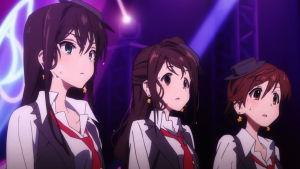
In the original series, sometimes idols would lose sight of themselves, resulting in them disappearing for a while. They would stop performing, stop attending practice, simply avoiding all responsibility. Of course, by the end of the arc, the situation will be solved and the idol that lost their way will have matured. In Cinderella Girls, this also happens during the last arc that focuses on Uzuki Shimamura. However, in addition to her existential crisis, due to her unprofessional actions, the studio actually threatens to drop her from the idol project (something that never came close to happening in the original).

Acknowledging that money and efficiency as essential factors which decide if idols get work or not is a pretty big step for the franchise. Of course, this may seem like common knowledge, but you’d be surprised to notice that in almost every idol anime, profit rarely plays a major role in the story, let alone the possibility of getting fired for being an inconvenience. Cinderella Girls is respectable for taking that route.
That said, is Cinderella Girls better than the original Idolm@ster? Well, honestly it depends on the person – both shows have their own reasons to like one over the other. Personally, I’m leaning towards Cinderella Girls. The show isn’t anything revolutionary that’ll change the way we view idol anime. But I do think it’s certainly an important addition to the genre for what it does, and will be a breath of fresh air for fans of idol anime. It makes a lot of interesting choices in the writing, subverting expectations, and serves to be a textbook example of several ways to develop an already created universe as a spin-off product. Thus is why Idolm@ster: Cinderella Girls is a good spin-off.
Also Ranko is best girl.
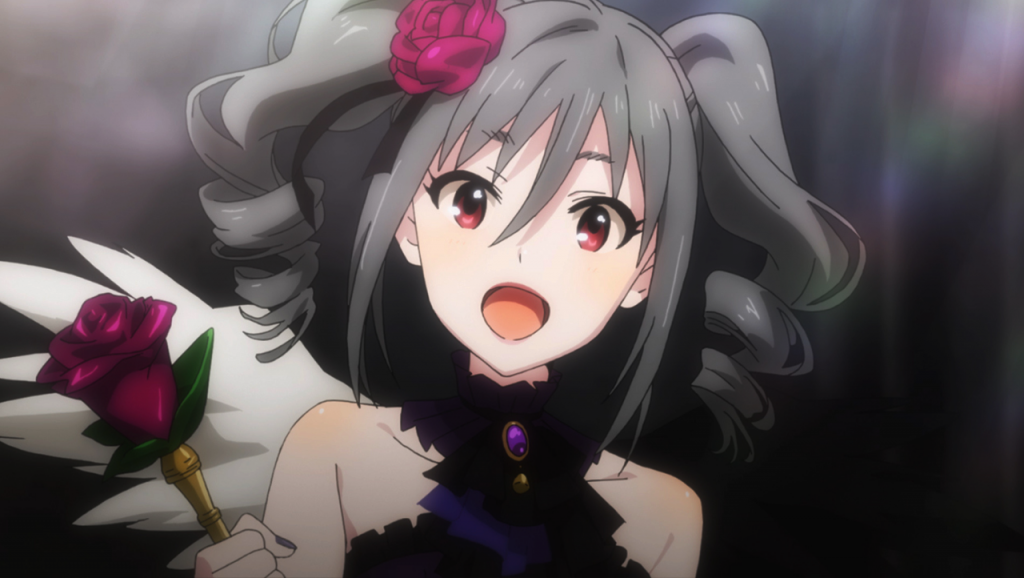
Big thank you to our supporters
From their continous support, we are able to pay our team for their time and hard work on the site.
We have a Thank-You page dedicated to those who help us continue the work that we’ve been doing.
See our thank you page




